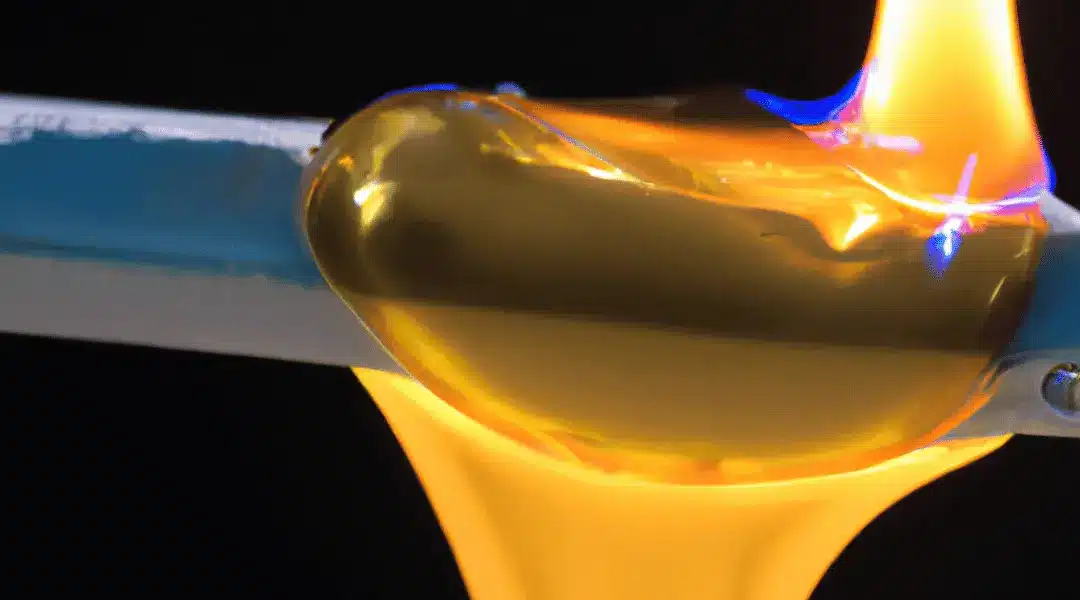When it comes to crafting, repairing, or building items that require high-temperature resistance, choosing the right glue is crucial. High-temperature glue can withstand heat and pressure, making it ideal for use in automotive, aerospace, and industrial applications. In this blog post, we will discuss the different types of glue that can withstand high temperatures and their applications.
Let’s dive into this peculiar topic and uncover the taste, health risks, and even unique uses of glue beyond its intended purpose.
What Glue Can Withstand High Temperatures
Whether you’re working on a car engine or creating a DIY project that requires high-temperature resistance, knowing the right type of glue to use can make all the difference. Keep reading to learn more about the best high-temperature glue options.

Let’s dive in!
Epoxy Glue
Epoxy glue is one of the most popular types of high-temperature glue. It’s a two-part adhesive that consists of a resin and a hardener. When mixed together, the resin and hardener create a strong bond that can withstand high temperatures.
Epoxy glue is ideal for use in automotive and industrial applications. It can be used to bond metals, ceramics, plastics, and wood. Additionally, it can withstand temperatures up to 350°F (177°C).
However, epoxy glue can be difficult to work with, and it requires precise mixing and application. It’s also important to note that it can take up to 24 hours for epoxy glue to fully cure.
Can Glue Get Moldy? Prevent Mold on Glue
Silicone Adhesive
Silicone adhesive is a versatile high-temperature glue that can withstand temperatures up to 600°F (315°C). It’s a flexible adhesive that can bond a variety of materials, including metal, glass, ceramics, and plastics.
It is applicable to use in automotive, aerospace, and industrial applications. It’s also commonly used in household applications, such as sealing windows and doors.
One of the benefits of silicone adhesive is that it’s easy to apply and can be used on irregular surfaces. However, it can take up to 24 hours for silicone adhesive to fully cure, and it’s not ideal for structural bonding.
Does Glue Stick to Parchment Paper?
Polyurethane Adhesive
Polyurethane adhesive is a high-temperature glue that can withstand temperatures up to 300°F (149°C). It’s a versatile adhesive that can bond a variety of including wood, metal, plastics, and ceramics.
Polyurethane adhesive is the best choice to use in automotive, construction, and industrial applications. It’s also commonly used in home repair projects, such as bonding wood trim and molding.
One of the benefits of polyurethane adhesive is that it’s waterproof and can be used in outdoor applications. However, it can be difficult to remove once it’s cured, and it can take up to 24 hours for it to fully cure.
Can You Use Glue Instead of Liquid Latex?
Cyanoacrylate Adhesive
Cyanoacrylate adhesive, also known as super glue, is a high-temperature glue that can withstand temperatures up to 212°F (100°C). It’s a fast-drying adhesive that can bond a variety of materials, including metal, plastic, and wood.
It is mainly helpful in household applications, such as repairing ceramics and plastic toys. It’s also commonly used in automotive and industrial applications.
One of the benefits of cyanoacrylate adhesive is that it dries quickly, typically within seconds. However, it’s not ideal for bonding large surfaces, and it can be brittle once it’s cured.
Hot Melt Adhesive
Hot melt adhesive, also known as hot glue, is a high-temperature glue that can withstand temperatures up to 400°F (204°C). It’s a versatile adhesive that can bond a variety of materials, including wood, metal, and plastic.
It can be used in household applications, such as crafting and DIY projects. It’s also commonly used in automotive and industrial applications.
One of the benefits of hot melt adhesive is that it’s easy to apply and dries quickly. However, it’s not ideal for use in high-stress applications, and it can be difficult to remove once it’s cured.
Can You Use Glue Dots on Walls?
Phenolic Adhesive
Phenolic adhesive is a high-temperature glue that can withstand temperatures up to 300°F (149°C). It’s a strong adhesive that can bond a variety of materials, including metal, wood, and plastic.
Phenolic adhesive is ideal for use in automotive and industrial applications. It’s also commonly used in home repair projects, such as bonding wood trim and molding.
One of the benefits of phenolic adhesive is that it’s waterproof and can be used in outdoor applications. However, it can be difficult to remove once it’s cured, and it can take up to 24 hours for it to fully cure.
Acrylic Adhesive
Acrylic adhesive is a high-temperature glue that can withstand temperatures up to 300°F (149°C). It’s a versatile adhesive that can bond a variety of materials, including metal, glass, and plastic.
It is quite helpful for usage in in automotive and industrial applications. It’s also commonly used in home repair projects, such as bonding plastic and metal surfaces.
One of the benefits of acrylic adhesive is that it’s transparent and non-yellowing, making it ideal for use in applications where appearance is important. Additionally, it can cure quickly and has a long shelf life.
Does Glue Expire? What Should You Do
Conclusion
Choosing the right high-temperature glue for your project is essential for ensuring a strong and reliable bond. Epoxy glue, silicone adhesive, polyurethane adhesive, cyanoac adhesive, hot melt adhesive, phenolic adhesive, and acrylic adhesive are all great options for high-temperature applications.
Consider the materials you’re bonding, the temperature range you need to withstand, and the application method when choosing the right glue for your project. With the right glue, you can create strong and durable bonds that will stand up to high temperatures and pressure.